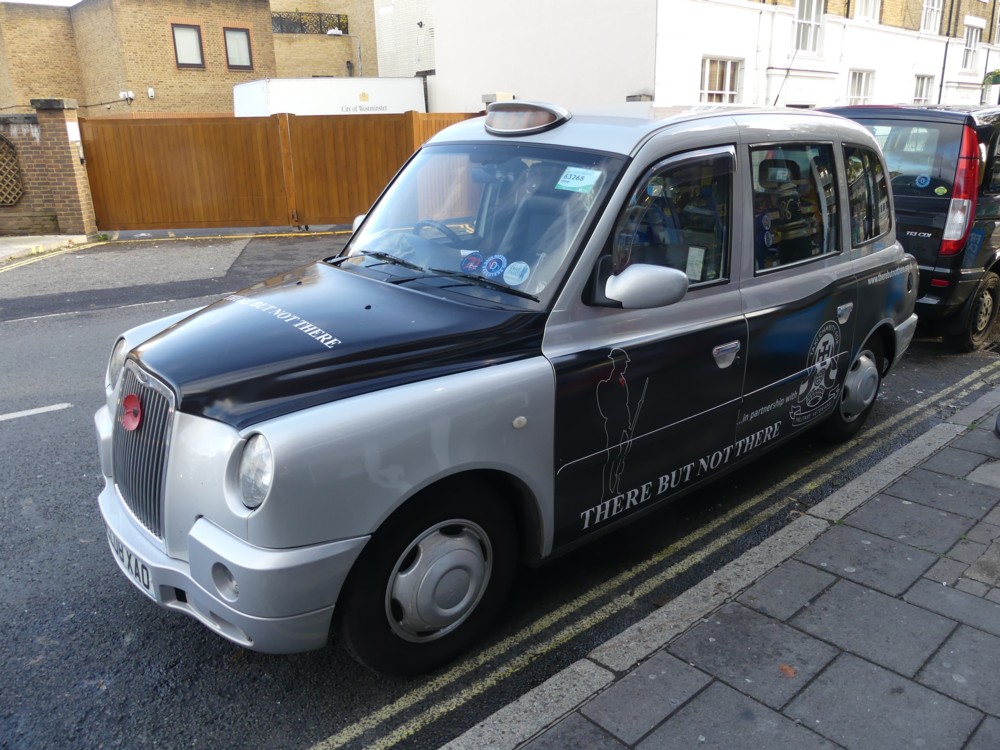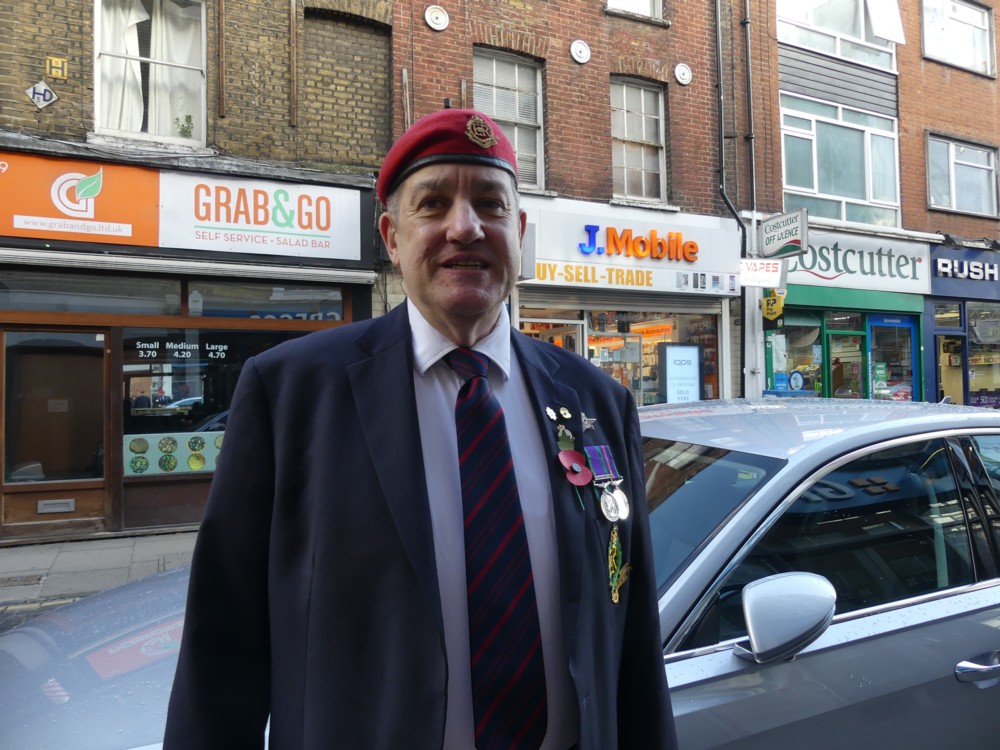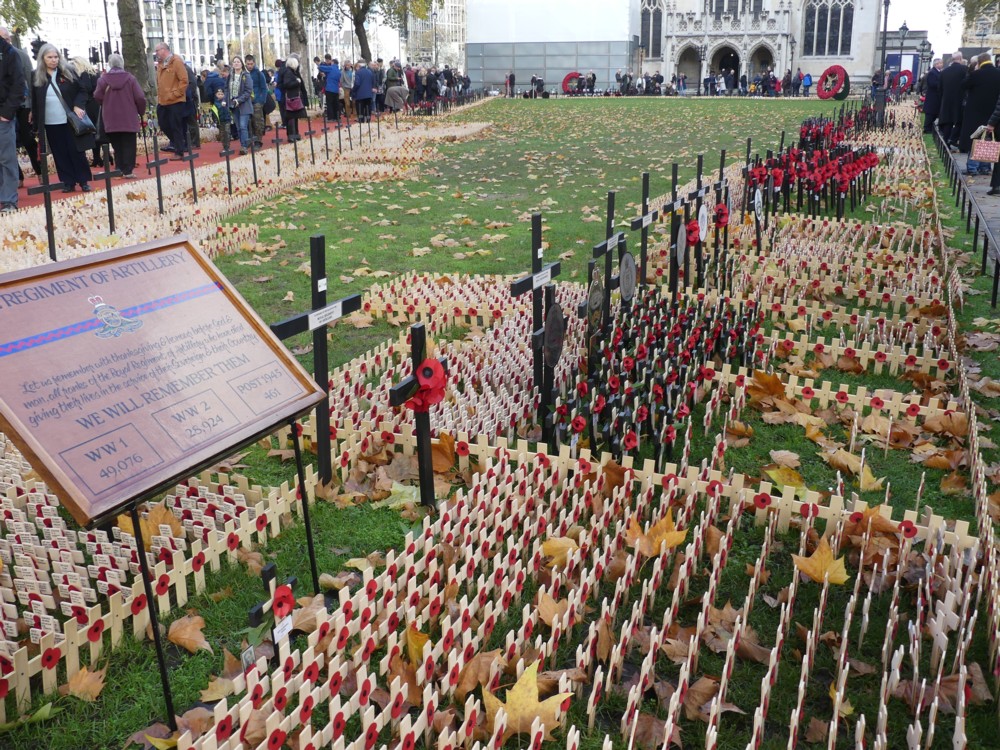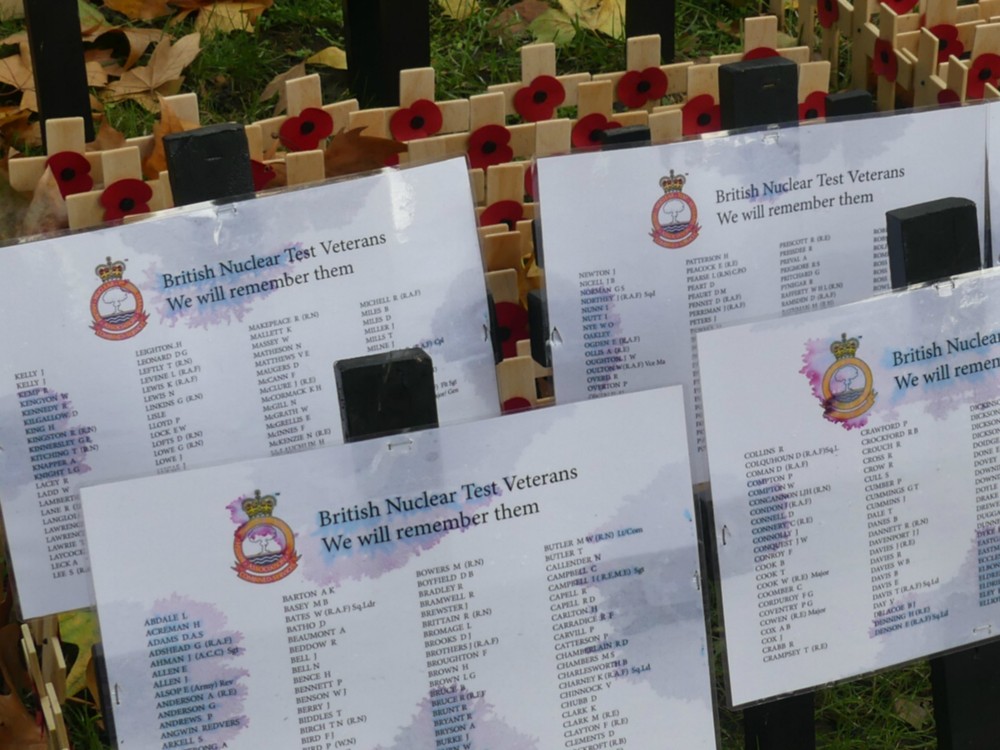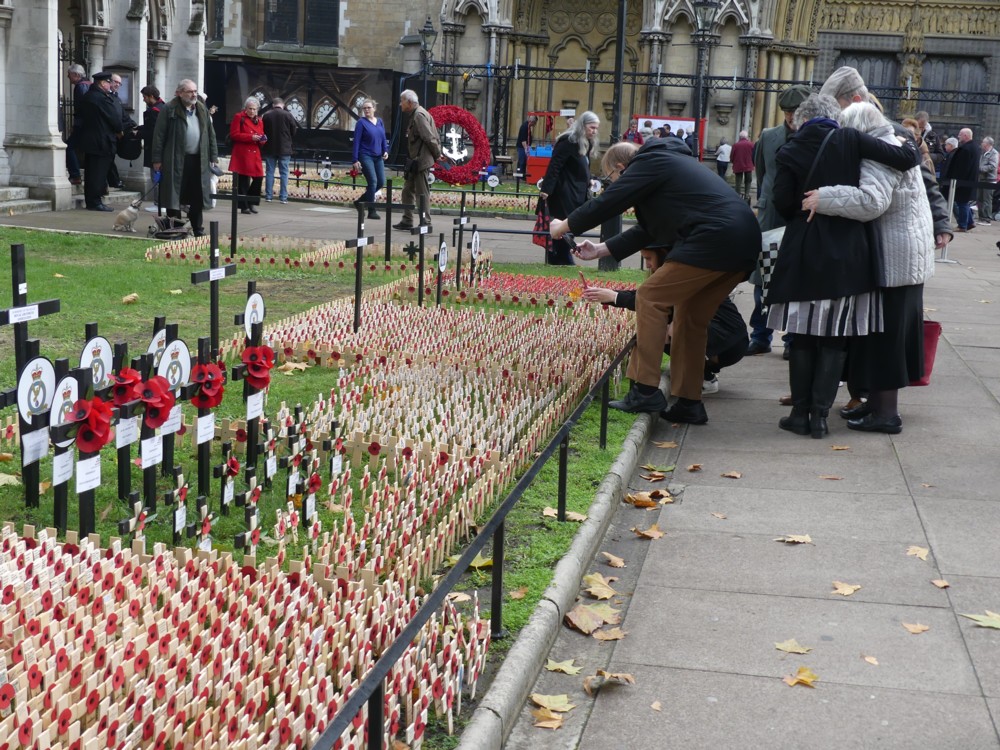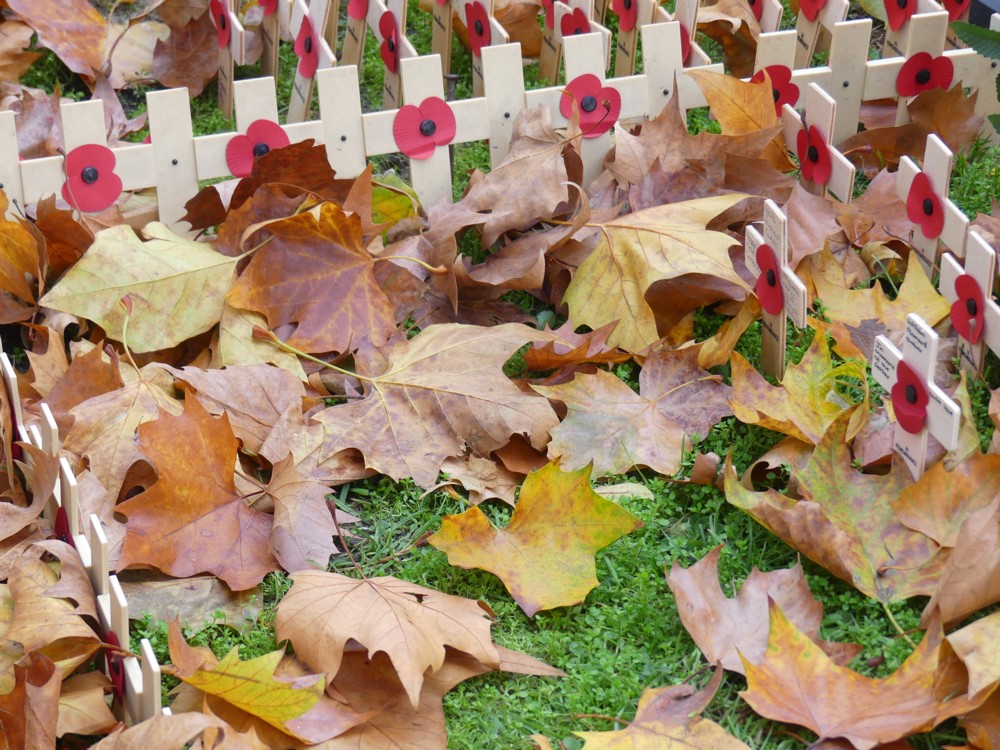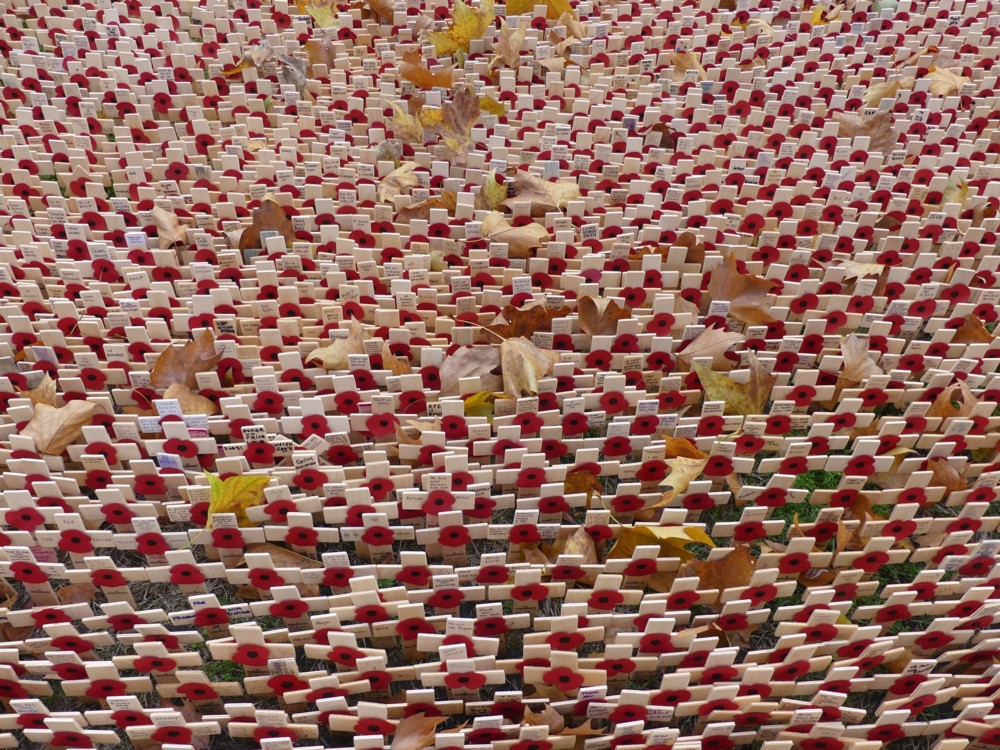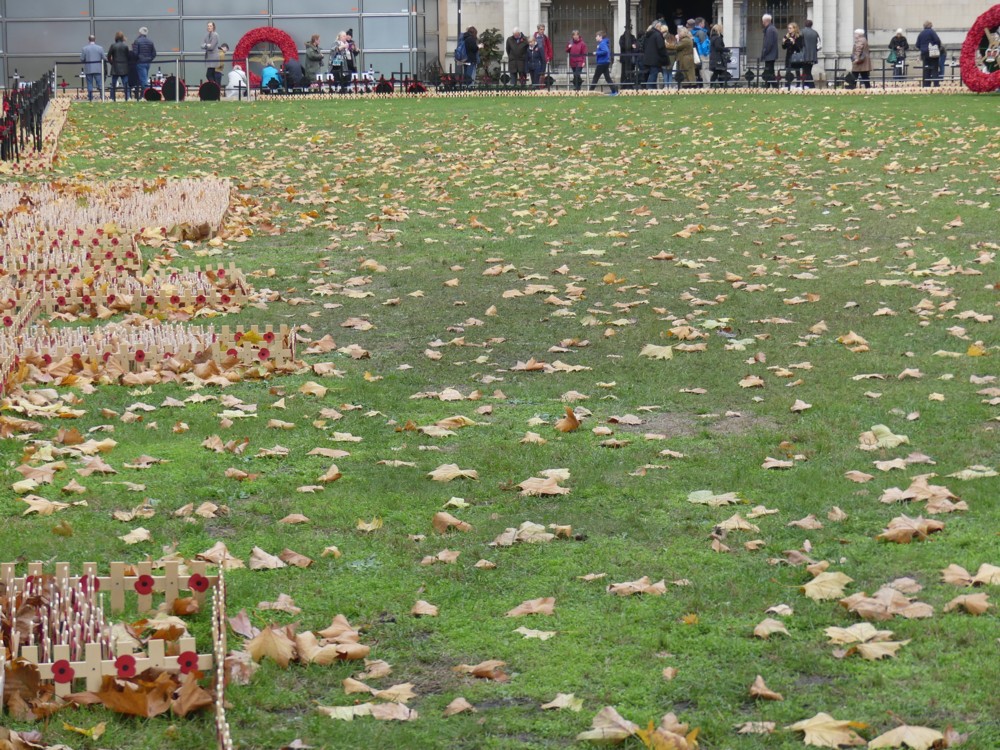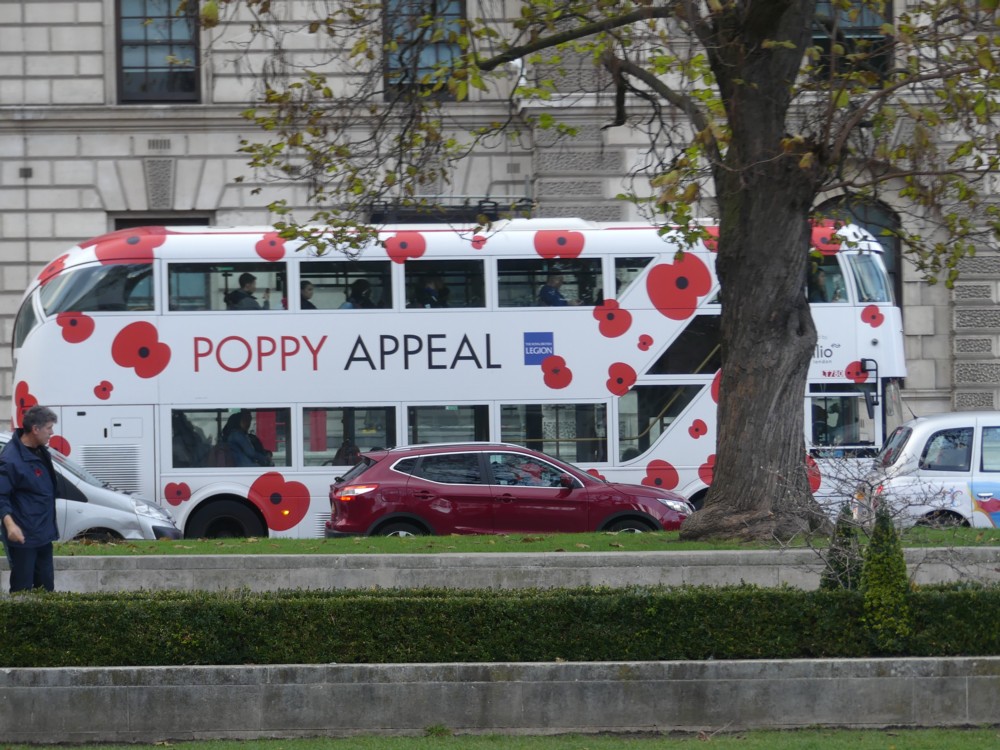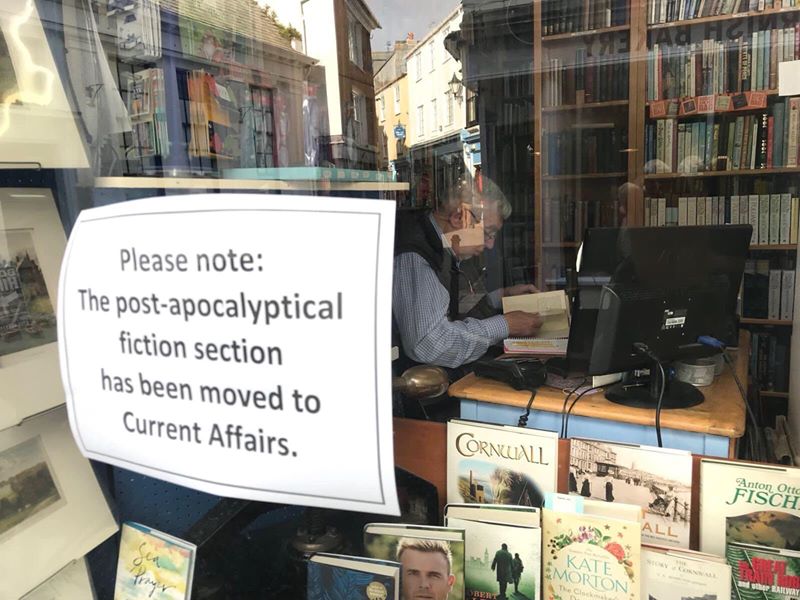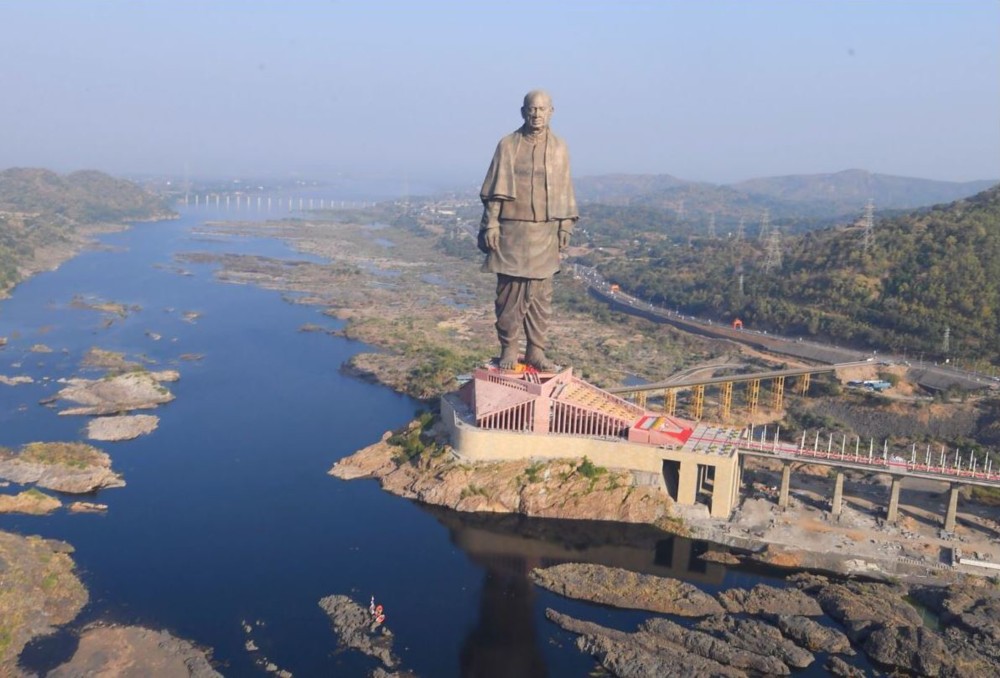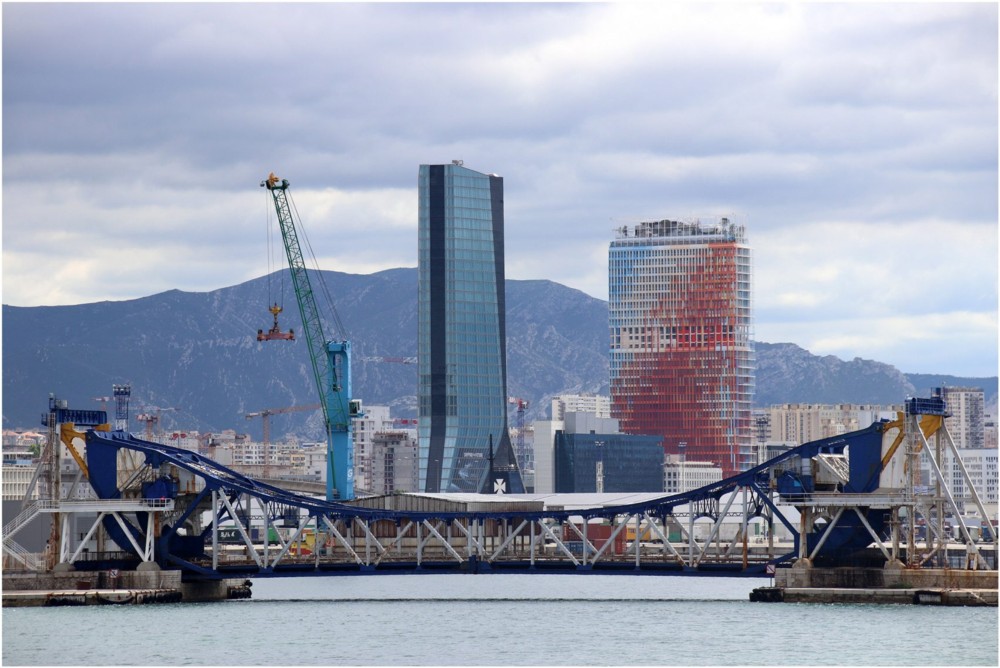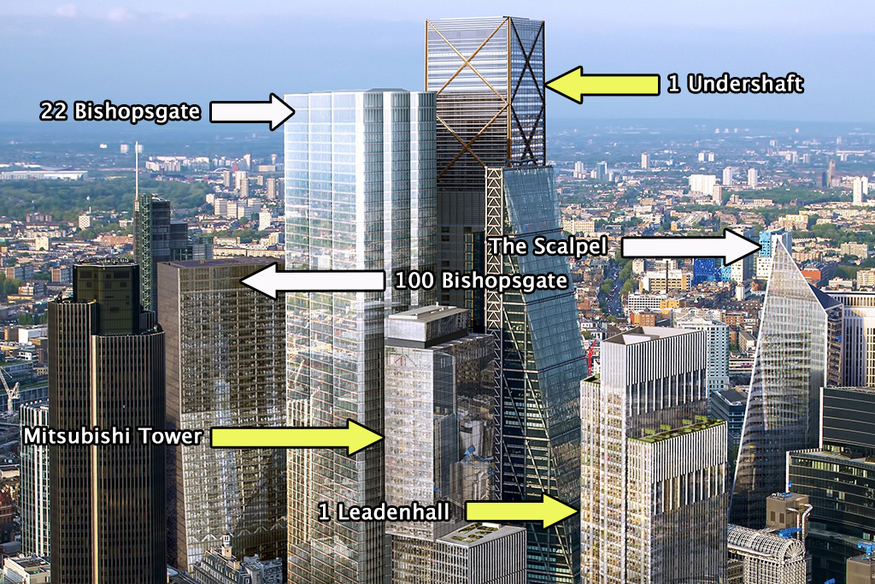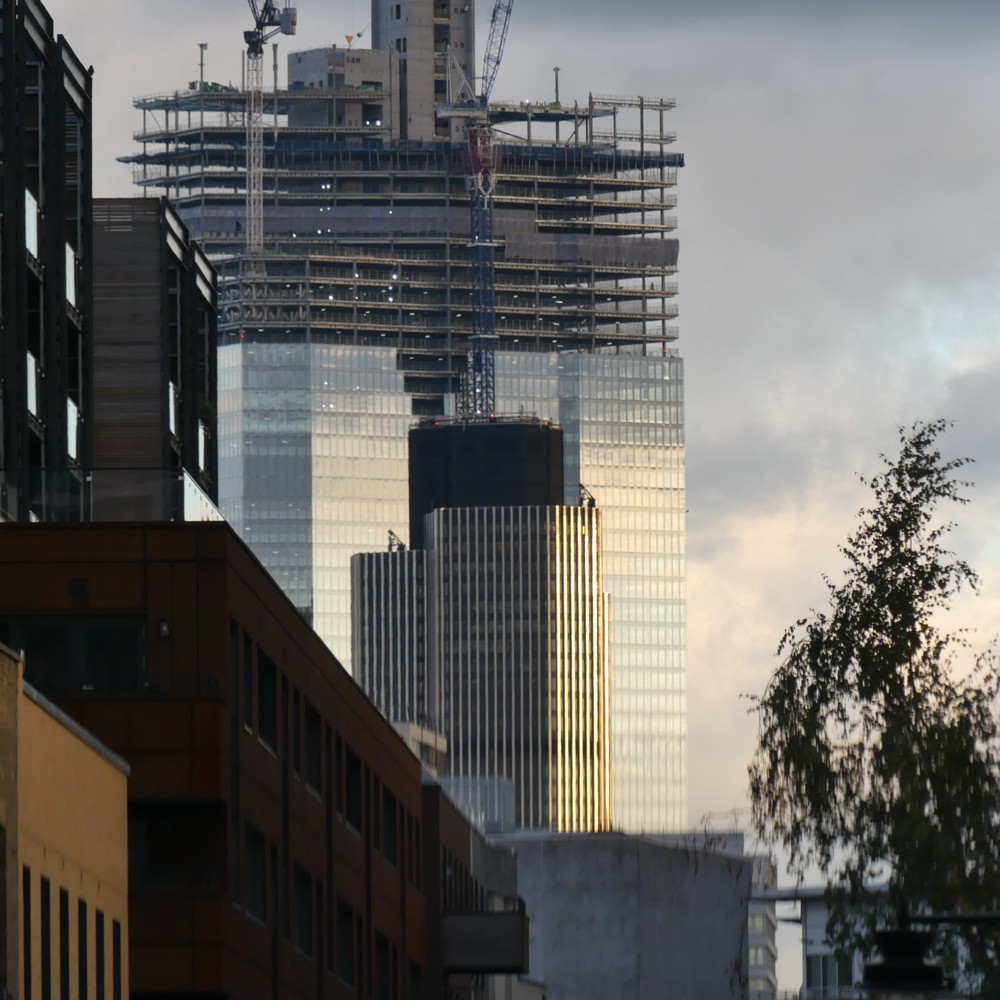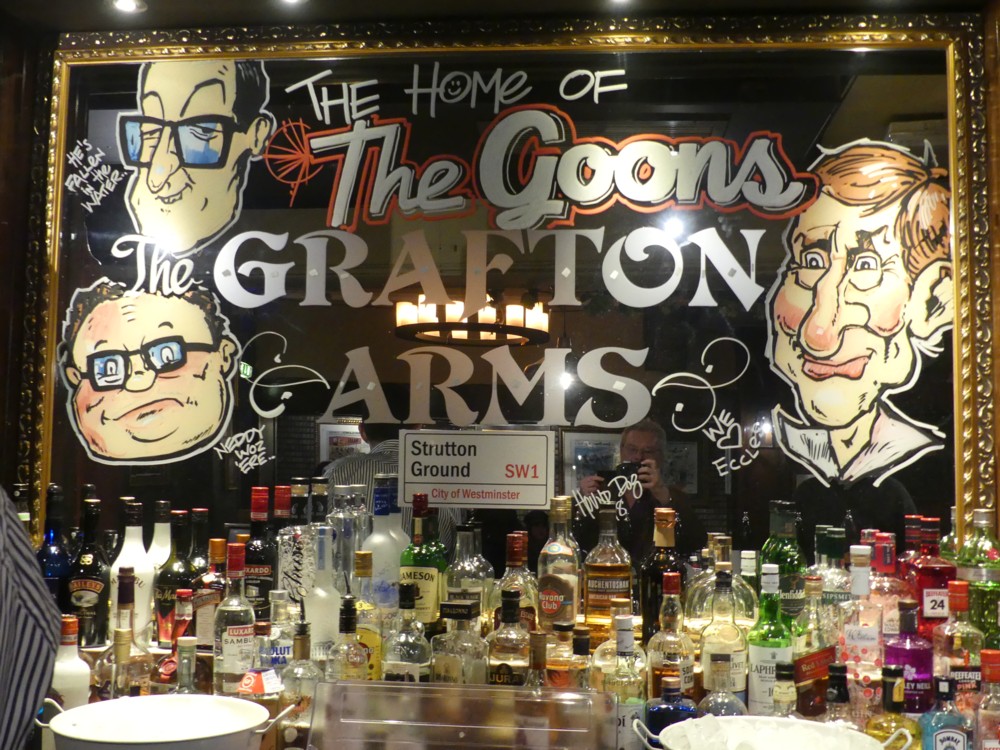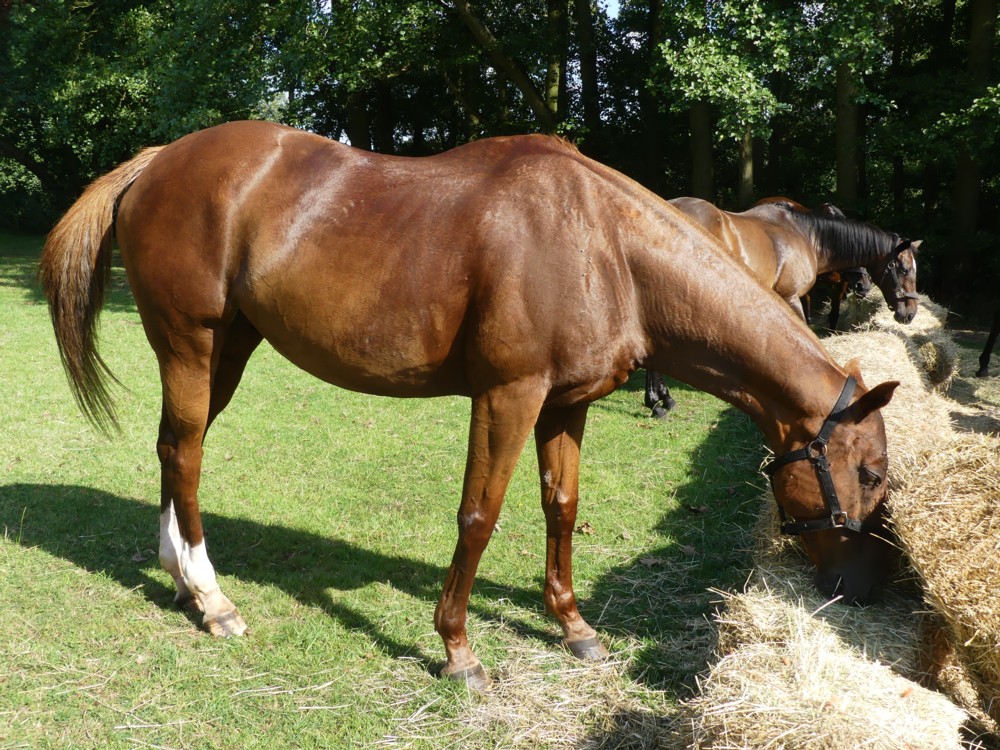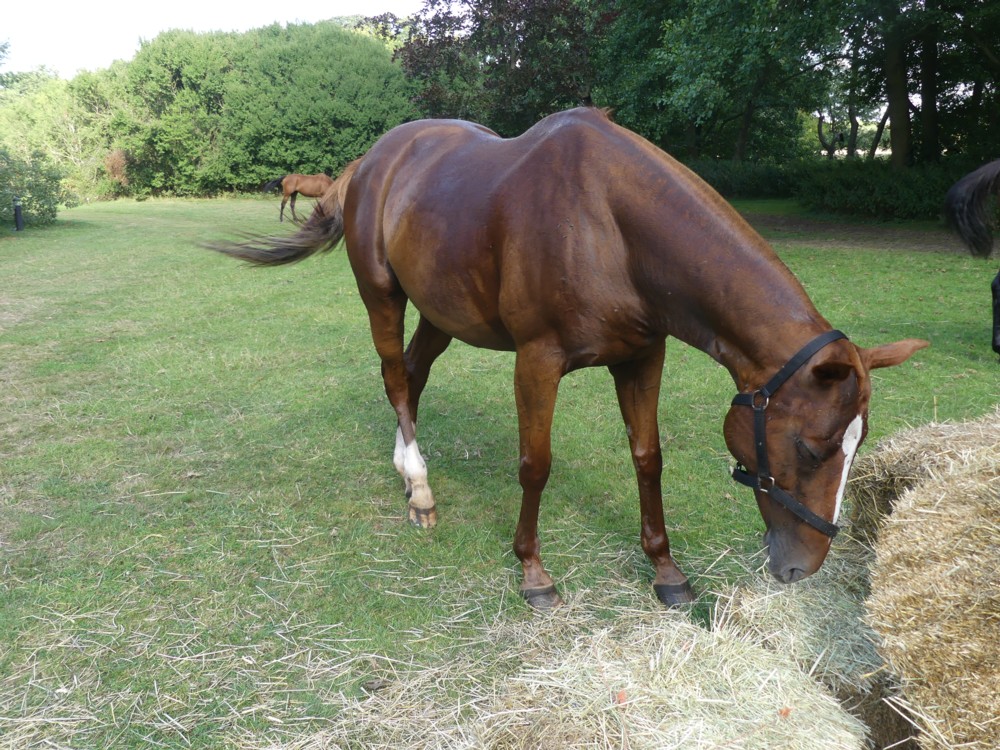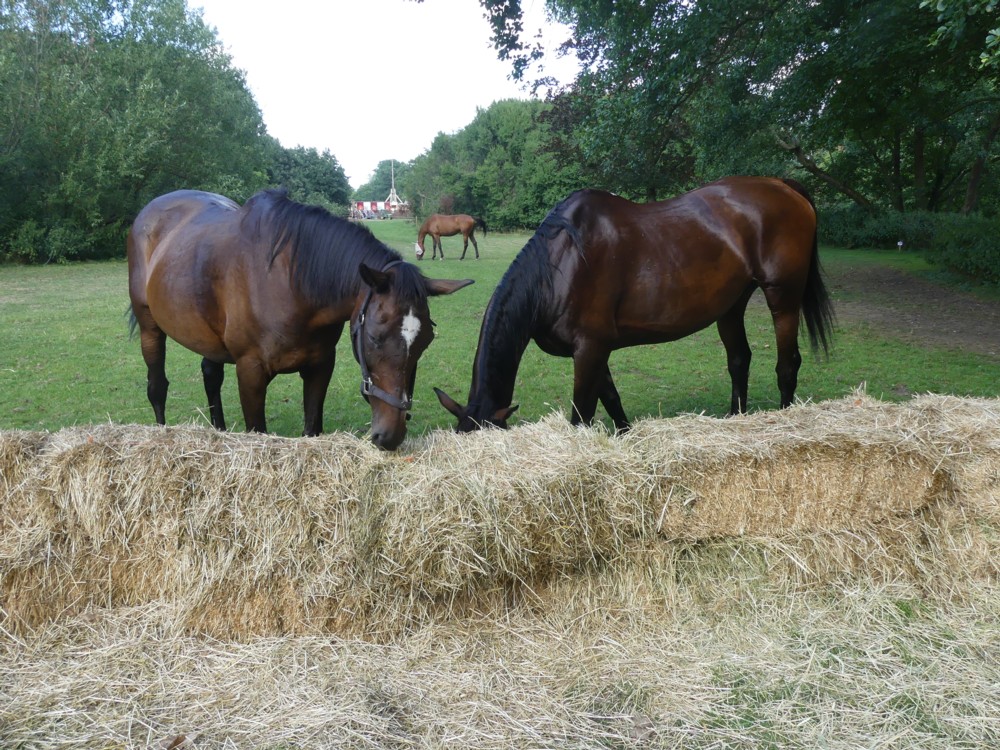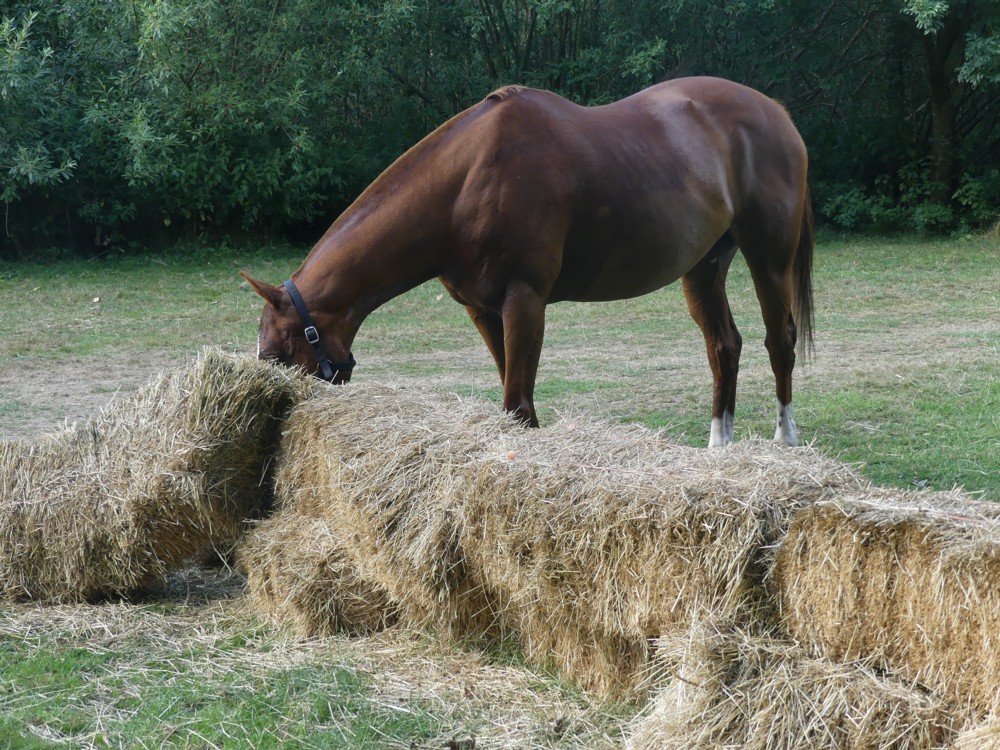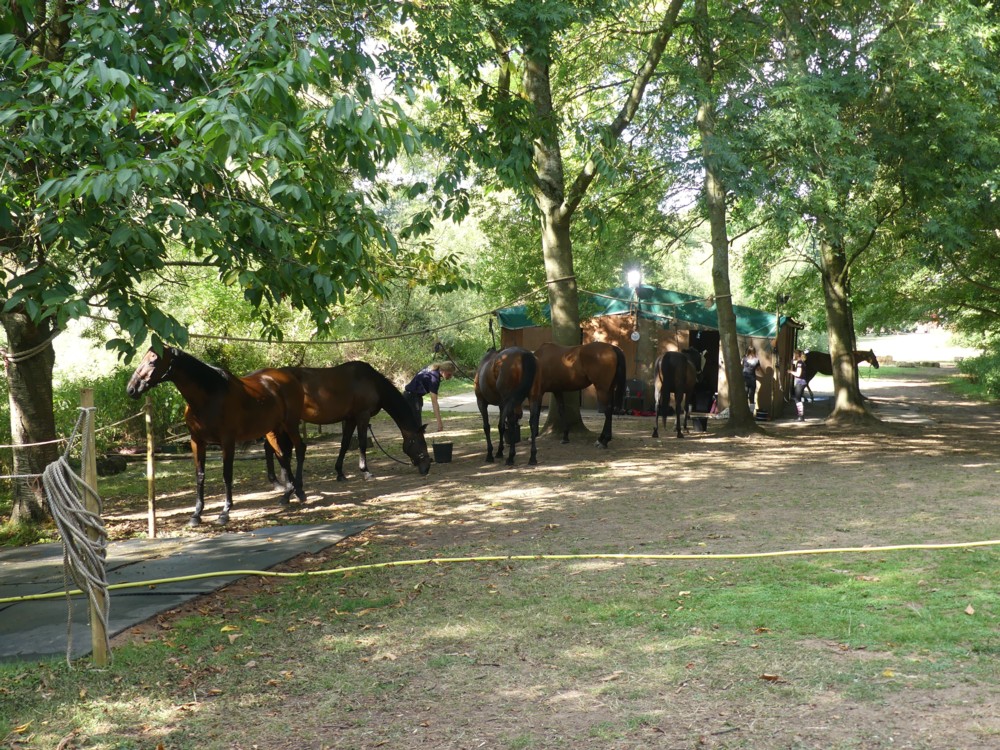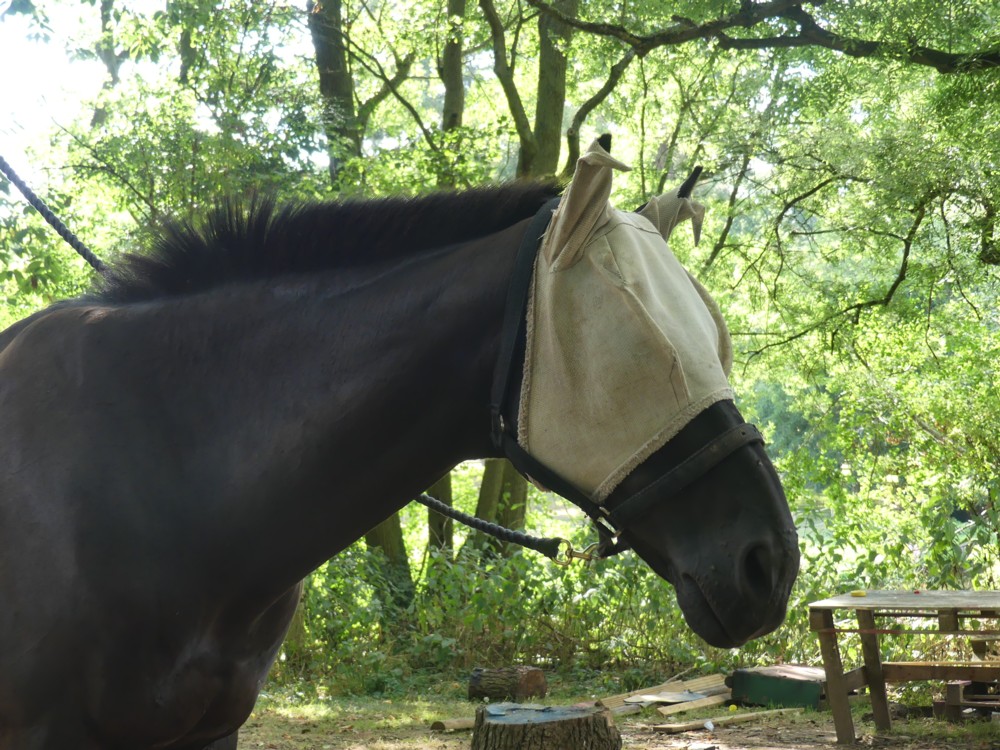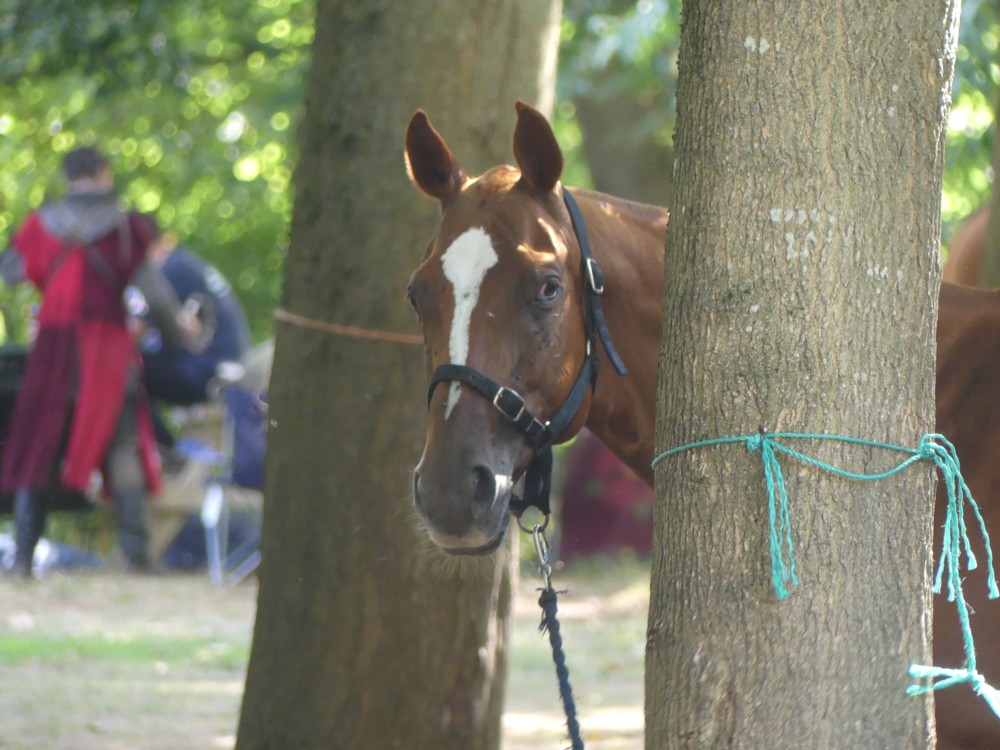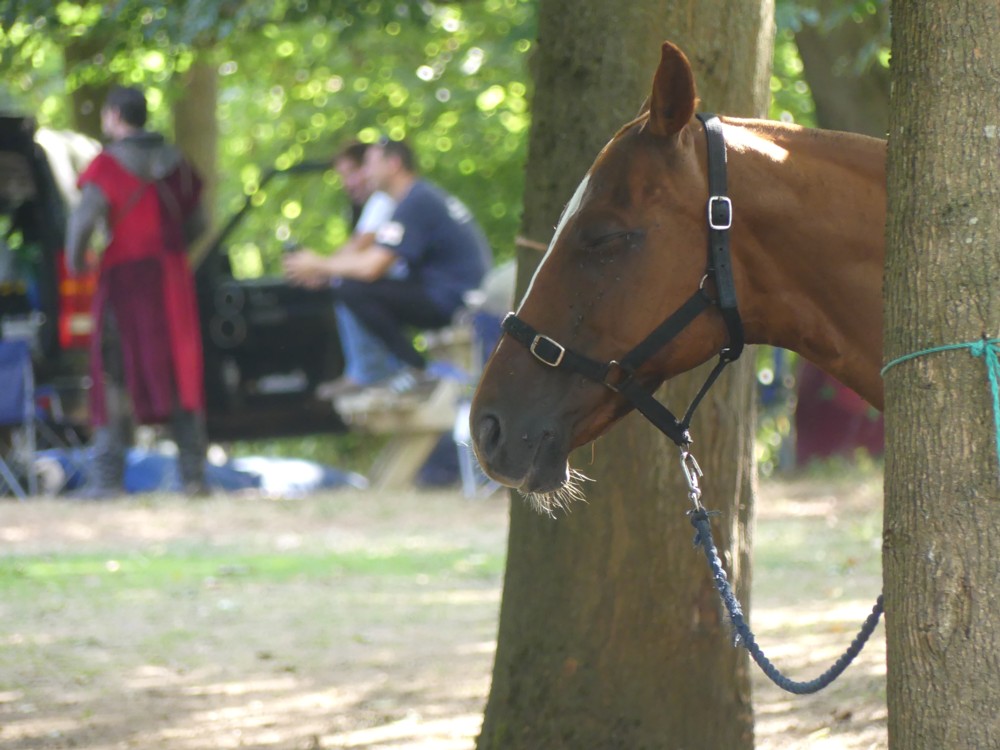Yesterday, I went on a shopping expedition which involved boarding a train at Charing Cross, which I planned to reach by going first to St James’s Park tube.
The first of the photos below (1.1) is of a taxi, parked close to where I live, with some sort of poppy related advert on it. I like to photo taxis covered in adverts. Temporariness, the passing London scene, will get more interesting as the years pass, blah blah.
Then, in Strutton Ground, just this side of Victoria Street, I encountered two besuited gentlemen wearing military berets and medals. I photoed them both, with their permission, and I post one of these photos here (1.2), also with their permission. Sadly, the other photo didn’t come out properly.
It was only at this point that I realised that, the following day (i.e. today) being Remembrance Sunday and what’s more the exact one hundredth anniversary of the Armistice of November 1918, London in the Westminster Abbey area would already be awash with Remembrance Sunday photo-ops. My shopping could wait a while, and I turned right down Victoria Street.
The seven other photos below mostly involve small wooden crosses and dead autumn leaves – autumn 2018 arrived at Peak Dead Leaf yesterday – but they also include another poppy related advert, this time on a the side of a bus (3.3), which I photoed in Parliament Square:
Sadly, the plasticated documents referring to “British Nuclear Test Veterans” (2.1) were insufficiently plasticated to resist the effects of the rain. It began to rain some more when I was arriving at Charing Cross station and it did not stop for several hours, so I’m guessing these lists suffered further rain damage. It’s odd how little sadnesses like this stick in your mind, in amongst the bigger sadnesses being remembered.
The autumn-leaves-among-crosses photos, all taken outside Westminster Abbey, are but a few of a million such that must have been taken over this weekend, in London and in many other places. Is it proper to include two mere advert photos, even if they are poppy related adverts, in such poetically symbolic and dignified company? I chose to do this because one of the things I find most interesting about these Remembrance remembrances is that, as each year of them passes, they don’t seem to be getting any smaller. People still want remember all this stuff, even though all the veterans of World War 1 are now gone. Hence the adverts. If the adverts didn’t get results, they’d not be worth their cost.
As to why these remembrances continue to be remembered, and by such huge numbers of people, year after year, I think one reason is that each political tribe and faction can each put their own spin on the sad events being remembered, but in the privacy of their own minds. For some political partisans, these ceremonies and symbols are a chance to wallow in the pageantry of patriotism. For others, they are an opportunity to rebuke such nationalists, for stirring up the kinds of hostility that might provoke a repeat of the sad events being remembered. “Patriotism” and “nationalism” being the words used to salute, or to denounce, the exact same sentiments. But declaring red poppies to be a warning that the defence budget should be increased, or that they are anti-Trump and anti-Brexit symbols that Trump supporters and Brexiteers have no right to wear, would be too vulgar and partisan, so on the whole this kind of vulgarity and partisanship is not indulged in, not out loud.
The phenomenon of the political meeting where all present hear the same words but where each understands them to mean different things – I’m thinking of such words as “Britain”, “freedom”, “democracy” and “common sense” – has long fascinated me. Remembrance ceremonies remind me, on a larger scale, of such meetings. I attended many such little political meetings myself before I decided that mainstream politics was not for me, and switched to libertarianism, where meanings are spelt out and arguments are had rather than avoided.
For less obsessively political people, Remembrance ceremonies and symbols are simply an opportunity to reflect on the sadness of history in general, and in particular the sadness of the premature deaths of beloved ancestors – or, perhaps worse – hardly known-about ancestors. We can at least all agree that premature death, in whatever circumstances, is a sad thing to contemplate. And until young men entirely cease from dying in wars, Remembrance Sunday will continue to be, among other things, a meaningfully up-to-date event.
And so, year after year, these ceremonies continue. Will this year’s anniversary come to be regarded as Peak Remembrance? We shall see.

